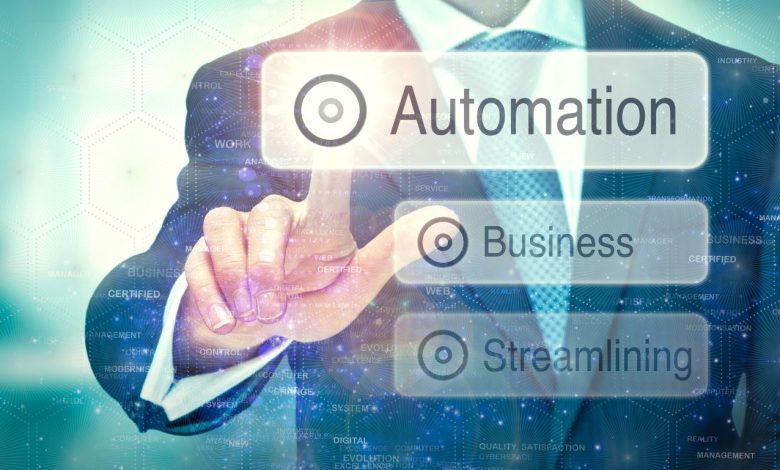
What are the Legal Tech Trends Set To Impact Law Firms In 2025?
Technology is reshaping how law firms operate, serve clients, and compete in an increasingly digital marketplace. As we move through 2025, legal professionals can no longer afford to ignore the technological revolution.
This transformation isn’t just about adopting new software—it’s about fundamentally rethinking how legal services are delivered. The legal tech landscape is evolving quickly, from artificial intelligence streamlining document review to blockchain technology securing sensitive client data.
This article will explore the most significant legal tech trends reshaping law firm operations. You’ll discover how automation revolutionizes legal research, why cybersecurity has become non-negotiable, and how cloud computing enables new business models. We’ll also examine the impact of remote work on legal practice and the growing importance of client-facing technology.
Enhancing Legal Research with Automation
Legal research has traditionally consumed countless billable hours. Lawyers would spend days combing through case law, statutes, and regulations to build compelling arguments for their clients. Today’s AI-driven tools are changing this reality dramatically.
Generative AI platforms can now analyze thousands of legal documents in minutes rather than weeks. These systems don’t just search for keywords—they understand context, identify relevant precedents, and even suggest legal strategies. Thomson Reuters and other industry leaders have invested heavily in these capabilities, recognizing their transformative potential.
The efficiency gains are staggering. A single attorney can now accomplish what once required a team of junior associates using AI-powered research tools. This shift doesn’t eliminate jobs; it elevates the quality of legal work by freeing professionals to focus on strategy and client counseling.
Forward-thinking firms are seeing competitive advantages from early adoption. They can deliver faster turnarounds on legal advice while maintaining higher accuracy rates. Client satisfaction increases when lawyers can provide comprehensive research results without inflated costs.
Streamlining Workflow Automation

Administrative tasks have long plagued legal professionals, eating into valuable time that could be spent on substantive legal work. Document drafting, contract review, and routine correspondence represent prime opportunities for automation.
Modern document automation platforms can generate contracts, pleadings, and other legal documents from templates in minutes. These systems automatically pull client information from case management databases and populate standard forms. The result is dramatic reductions in repetitive tasks that once consumed junior associate time.
Contract analysis presents another compelling use case. AI-powered contract review tools can identify key terms, flag potential issues, and suggest revisions based on firm preferences. Mid-sized law firms particularly benefit from these capabilities, as they often lack the resources for large teams of contract reviewers.
Time tracking and billing processes are also being revolutionized. Modern legal practice management software automatically captures billable activities, categorizes work by matter, and generates detailed invoices. This automation reduces billing disputes and improves cash flow for legal practices.
Enhancing Cybersecurity
Cyber threats targeting law firms have escalated dramatically in recent years. Legal practices hold treasure troves of sensitive client information, making them attractive targets for cybercriminals. The consequences of data breaches extend beyond financial losses—they can destroy client relationships and professional reputations.
Multi-factor authentication has become a crucial requirement for legal technology adoption. Gone are the days when simple passwords provided adequate protection. Modern cybersecurity solutions require multiple verification methods, including biometric authentication and hardware tokens.
AI-powered threat detection systems now continuously monitor firm networks. These platforms identify unusual access patterns, flag suspicious activities, and respond to potential breaches in real-time. The technology learns from each interaction, becoming more sophisticated at identifying emerging threats.
Cloud-based solutions often provide better security than on-premise alternatives. Major cloud providers invest billions in cybersecurity infrastructure that individual law firms could never afford. They employ teams of security experts and maintain certifications that ensure compliance with industry standards.
Identity management software is essential for firms managing multiple users across various systems. These platforms control access permissions, monitor user activities, and ensure that departing employees lose system access immediately. The goal is to create comprehensive security frameworks that protect client data at every touchpoint.
Ensuring Compliance and Data Privacy
Regulatory compliance has become increasingly complex as data privacy laws evolve globally. Law firms must navigate requirements from GDPR, CCPA, and numerous other jurisdictions while maintaining operational efficiency.
Consumer law compliance requires sophisticated tracking systems that monitor how client data is collected, stored, and processed. Legal practices need clear audit trails showing who accessed what information and when. This documentation proves essential during regulatory investigations or client disputes.
Compliance checks are being automated through specialized software platforms. These systems monitor firm activities continuously, flagging potential violations before they become serious problems. They track everything from conflict checking to trust account management, ensuring adherence to professional standards.
Data retention policies have gained new importance as storage costs decrease and regulatory scrutiny increases. Firms must balance the need to preserve potentially relevant information with requirements to delete data after specified periods. Automated retention systems apply these policies consistently across all firm data.
The challenge extends beyond technical compliance to cultural change. Legal professionals must understand their responsibilities regarding data protection and privacy. Training programs and awareness campaigns help ensure that compliance becomes embedded in daily operations rather than an afterthought.
Impact of Remote and Hybrid Work
The shift toward flexible work models has accelerated legal technology adoption. Lawyers need secure access to firm systems from any location, driving demand for cloud-based solutions and mobile-friendly platforms.
Cloud-based legal practice management software enables seamless collaboration regardless of physical location. Team members can access case files, communicate with clients, and manage deadlines from home offices or client sites. This flexibility improves work-life balance while maintaining productivity.
Client meetings have moved mainly online, requiring sophisticated video conferencing and collaboration tools. Legal professionals need platforms that provide security appropriate for confidential discussions while offering the features necessary for effective communication.
Document management systems have evolved to support distributed teams. Modern platforms provide version control, collaboration features, and secure sharing capabilities that rival in-person workflows. Lawyers can review documents together in real-time, regardless of their physical locations.
Hybrid transcription models combine AI automation with human oversight to capture accurate client conversations and deposition records. These systems provide the speed of automated transcription with the accuracy that legal proceedings demand.
Strategic Investments in Cloud Computing
Cloud technology has moved from nice-to-have to business-critical for legal practices. The efficiency gains and cost savings make cloud adoption essential for competitive positioning.
Premise solutions require significant upfront investments and ongoing maintenance costs. Cloud-based alternatives eliminate these expenses while providing automatic updates and enhanced security features. Firms can redirect IT budgets toward strategic initiatives rather than infrastructure maintenance.
Cloud platforms have a significant advantage in terms of scalability. Growing practices can add users and features instantly without hardware purchases or lengthy implementation periods. This flexibility proves especially valuable for firms experiencing rapid growth or seasonal fluctuations.
Disaster recovery capabilities built into cloud services provide peace of mind that on-premise systems cannot match. Data replication across multiple geographic locations ensures business continuity even during major disruptions.
Integration capabilities allow firms to connect best-of-breed solutions rather than settling for all-in-one platforms that excel at nothing. Cloud APIs enable seamless data flow between case management, accounting, and document systems.
Enhancing Client Engagement
Client expectations have evolved dramatically as consumer technology has improved. Legal clients now expect the same level of service and convenience they receive from other professional services.
Client portals provide secure, convenient access to case information and documents. These platforms allow clients to track matter progress, review invoices, and communicate with their legal teams without phone calls or emails. The result is improved client satisfaction and reduced administrative overhead.
Real-time communication tools enable faster response times and better client service. Modern platforms integrate email, text messaging, and video calling to provide flexible communication options that match client preferences.
Value-based pricing models are becoming more common as clients demand alternatives to traditional hourly billing. Legal technology enables accurate project estimation and progress tracking, making alternative pricing models viable.
Client-facing technology extends beyond communication to service delivery. Some firms now offer clients direct access to automated legal services, such as document generation or basic legal research tools.
Revolutionizing Evidence Presentation
Courtroom technology has advanced significantly, changing how lawyers present evidence and arguments. Digital evidence management systems organize vast amounts of information and make it accessible during proceedings.
Advanced presentation software enables dynamic evidence presentation that engages judges and juries more effectively than traditional methods. Lawyers can highlight key documents, play video depositions, and create compelling visual narratives that support their arguments.
Blockchain technology is beginning to impact evidence authentication. Immutable records provide proof of document integrity and chain of custody that courts are starting to recognize as admissible evidence.
Mobile technology allows attorneys to access case information and evidence anywhere in the courthouse. Tablet computers and smartphones provide instant access to documents, witness statements, and legal research during proceedings.
Reducing Administrative Workload

Law firm operations involve numerous administrative tasks that don’t directly generate revenue but remain essential for business success. Technology automates many of these functions, freeing legal professionals to focus on higher-value activities.
Automated billing systems generate invoices, track payments, and follow up on overdue accounts without human intervention. These platforms integrate with time-tracking software to ensure accurate billing while reducing administrative overhead.
Client intake processes are being streamlined through online forms and automated routing systems. Potential clients can submit initial information through firm websites, triggering automated responses and case assignment workflows.
Calendar management and scheduling software eliminates back-and-forth communications while preventing double-booking conflicts. Some platforms even integrate with client calendars to suggest optimal meeting times automatically.
Document generation workflows create standard forms and letters with minimal manual input. These systems pull information from case management databases to populate templates, ensuring consistency while saving time.
Conclusion
The legal technology landscape in 2025 presents unprecedented opportunities for firms willing to embrace change. From AI-powered research tools to comprehensive cybersecurity platforms, technology is reshaping every aspect of legal practice.
Success in this environment requires strategic thinking about technology adoption. Firms must balance the benefits of cutting-edge technology with the practical realities of implementation and user adoption. The most successful practices will be those that view technology as an enabler of better client service rather than simply a cost-cutting measure.
The exciting time ahead promises continued innovation and improvement in delivering legal services. Firms that invest wisely in legal technology trends will find themselves better positioned to serve clients, attract talent, and compete effectively in an increasingly digital marketplace.
Industry experts agree that legal tech adoption will only accelerate. The question isn’t whether to embrace these trends—it’s how quickly and effectively firms can implement them while maintaining the high standards clients expect from their legal counsel.
FAQs
Q: How much should law firms budget for legal technology in 2025?
A: Most experts recommend allocating 5-8% of gross revenue to technology investments, with higher percentages for firms in digital transformation phases.
Q: Which legal tech trend offers the highest ROI for small firms?
A: Document automation and cloud-based practice management typically provide the fastest returns through reduced administrative costs and improved efficiency.
Q: How can firms ensure cybersecurity when adopting new legal technologies?
A: Implement multi-factor authentication, choose vendors with strong security certifications, and maintain regular security training for all staff members.
Q: Will AI replace lawyers in the future?
AI will automate routine tasks but cannot replace strategic thinking, client counseling, and complex problem-solving that define legal practice.
Q: How do clients benefit from law firms adopting new technology?
A: Clients receive faster service, more accurate work products, better communication, and often lower costs as firms become more efficient.
